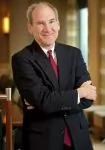Allegation that court itself was victim of fraud causes federal
judge to recuse himself,
all other judges in the district
The biggest litigation you've probably never heard, the Moonlight Fire litigation, just took another twist. Following a huge Northern California wildfire, the State and the Feds sought tens of millions in damages from landowners and loggers, alleging that the fire was started by a spark from a logger's dozer. In a pair of February 4, 2014 orders, however, a State Court judge dismissed the State's case, finding that the State had "engaged in misconduct during the cause of the litigation that is deliberate, that is egregious, sand that renders any remedy short of dismissal inadequate to preserve the fairness of the trial." Describing the State's conduct "corrupt and tainted," "willful," and "reek[ing] of bad faith," involving the "destr[uction] of critical evidence" – a "systematic campaign of misdirection" — the Judge also ordered the State to reimburse the defendants some $32 million in attorneys' fees. The State's central offense: deliberately concealing evidence that the fire was not started by the defendants, and fabricating evidence to the contrary.
By the time that the State Court judge made his ruling, however, the defendants had already surrendered to the Feds. Facing a claim in excess of one billion dollars, the defendants agreed to the biggest-ever settlement of its kind, over $120 million in cash and land. But what the defendants learned in the then-ongoing State case led them to file, on October 9, 2014, a Rule 60 motion to set aside, as a "fraud on the court," the judgment that embodied the settlement.
The Court, noting that the motion alleged that the Court itself was a victim, entered an order recusing all of the judges in the Eastern District of California, and referring the case "to Alex Kozinski, Chief Judge of the United States Ninth Circuit Court of Appeals, for the assignment of a judge other than from the Eastern District of California to sit by designation and hear case number 2:09-cv-02445 and all related matters."
The defendants' motion and supporting declarations (one from a former AUSA!) are well worth reading, if for no other reason than to be reminded of what kind of misconduct witnesses, and lawyers, may engage in—and, more importantly, how it can be uncovered.
The content of this article is intended to provide a general guide to the subject matter. Specialist advice should be sought about your specific circumstances.
